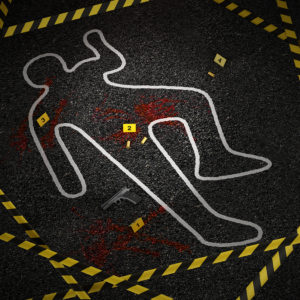More children in Chicago have been shot this year than have died of the coronavirus in the United States.
According to the Centers for Disease Control and Prevention, 214 children have died of COVID-19 in 2021. In Chicago, 261 children under age 18 have been shot as of early September.
Do we hear about it on 24-hour cable news? Don’t think so.
Most children suffering as the victims of gun violence in Chicago are Black, with many caught in the daily crossfire between rival gangbangers, a familiar narrative, indeed. Most of the perpetrators also are Black.
Where’s the mass outrage?
Answer: These incidents don’t involve the police.
Some more frightening figures.
Last year, Tom Winter, an investigations correspondent for NBC News specializing in law enforcement and counter-terrorism, reported on Twitter that for the month of July 2020, every person shot in New York City (100 total) was a person of color, according to the NYPD. In June 2020, 97 percent of the victims were people of color. That’s mostly Black and Hispanic folk.
As Mary Mitchell, a Black columnist for the Chicago Sun-Times so insightfully wrote a few months ago: “When a White police officer unjustly kills a Black or Brown person, we demand that justice is served. But many of those same people making the most noise ignore the reality that Black and Brown people are getting killed daily by gun violence.”
In other words, when the perpetrator is viewed as within said community, the concern and outrage are tempered. When the perpetrator is viewed as being an “outsider” — meaning police or White folk — the unbridled passions and visceral reactions are often over the top. That’s when we see the burning buildings and ridiculous riots.
Mayor Lori Lightfoot has proposed suing Chicago gangs and seizing their assets, in effect using the statutes of RICO (Racketeer Influenced Corrupt Organizations Act, which targets criminals’ ill-gotten gains). But she has faced resistance from young, Black Chicagoans.
In the United States, wealth can be generational; well, so can violence.
All of these facts, figures, and anecdotes remind one of August 1979. That’s when Ebony magazine published a special edition featuring the blaring headline, “Black on Black Crime.” An introspective sub-headline offered a bit of hope: “The Causes, The Consequences, The Cures.”
That hope might have dissipated 42 years later.
The Trace, an Internet publication that focuses solely on gun violence, offered a synopsis of how residential “redlining” played a major role in the ugly legacy of generational violence, as the website referenced a timely, in-depth analysis by The Philadelphia Inquirer. Its package focused on the ills of “redlining,” which essentially is the system of employing race and geography as the determining factors in the makeup of neighborhoods.
The Inquirer published a masterful package of stories, graphics, and charts that documented the violent history of 57 blocks in the city. And you know if these Blocks of Violence are true for Philadelphia, the same damn well can be said of every major U.S. city.
The Inquirer wrote, “In the 1930s, the federal government oversaw the creation of racist appraisal maps that deemed sections of cities as ‘hazardous’ or ‘declining’ based primarily on the presence of communities of color. Residents of these ‘redlined’ neighborhoods had limited access to mortgages, which led to disinvestment and poverty in black and Latino neighborhoods.”
Also, call it generational decay.
However, is there more to the story?
Such as something about personal responsibility, something most Black leaders don’t openly discuss in public settings.
But Washington, D.C. Police Chief Robert Contee went there in July, voicing concerns during a fiery, seven-minute diatribe that many leaders likely would love to say publicly but don’t out of fear of critics of law enforcement, such as Black Lives Matter.
Contee, who is Black, blamed both the justice system and “bad actors.” Speaking before Washington media following a scary, daytime street shooting involving Black perpetrators and victims (caught on video), he went off with these powerfully terse comments: “I’m mad as hell about this. This is the same movie when I was a boy growing up here. The real issue is we have a vicious cycle of bad actors who do things, no accountability, and they end up back in (the) community.
“But you cannot coddle violent criminals. They might not want a job. They might not need services. What they may require is to be off of our streets because they’re making it unsafe for us.”
Perhaps, Chief Contee is on to something, regardless of generation.

